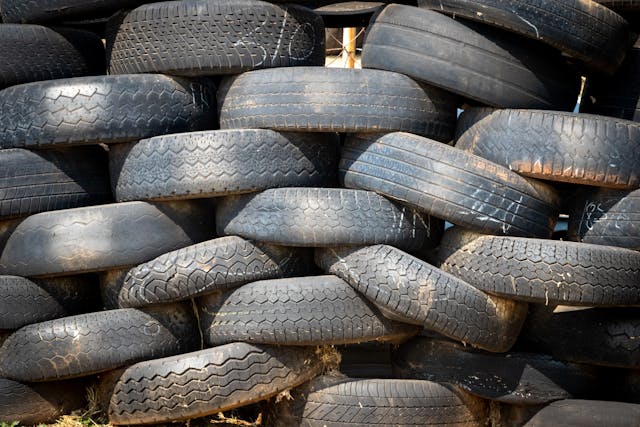
What is vulcanization? Vulcanization is a process that changes natural rubber into a stronger and more durable material. This makes rubber far more useful, but is terrible for the environment.
Humans have used natural rubber for thousands of years. There are over 2,500 different trees that produce rubber, but the main one is called Hevea Brasiliensis, and it grows in the Amazon rainforest. The Mayans had used rubber for a long time. They used it to make balls and other toys. When the Spanish and Portuguese colonized South America they came into contact with rubber. Until the 19th century, the only place that these trees grew was in South America. However, in 1876, a British explorer called Henry Wickham stole 70,000 rubber tree seeds. The majority of the seeds were used to start rubber plantations in Indonesia, Sri Lanka, Malaysia, and other British Colonies.
Natural rubber is an amazing material. Trees that make rubber produce it as a defense mechanism. Natural rubber is a thick, milky white sap that flows through the trees in latex ducts. Trees use this latex to seal up wounds when they are injured so that insects and bacteria can’t get in. The latex can also be toxic, which stops animals and insects from eating the tree. Because it is a defense mechanism, the tree produces latex when it is cut, and this is how humans tap the tree. The latex contains a lot compounds called isoprene, which are made of two carbon double bonds. When the latex is removed from the tree and dried, the isoprene compounds join together and form long polymers, which is where rubber gets its strength and its elasticity from.
The problem, from a human point of view, not from nature’s point of view, is that natural rubber biodegrades. Natural rubber breaks down in the presence of oxygen, and there are bacteria and fungi that can eat natural rubber. They break apart the isoprene polymers. In moist soil with a lot of oxygen, natural rubber will biodegrade in about 2 years. In the early 19th century, rubber products became more popular and the fact that they broke down and became weaker was a problem. A lot of people looked for ways to make rubber stronger and longer lasting.
The vulcanization process was discovered by Charles Goodyear in 1839, but . He had spent a long time working with rubber. It broke down in oxygen, it became sticky when hot, and it became brittle when cold. He wanted a way to make it stronger. In 1839, he was experimenting with mixing rubber with different chemicals. He mixed the rubber with sulfur and then he accidentally dropped it into a hot frying pan. The rubber should have melted, but for some reason it became harder instead. He had invented vulcanization. However, a British inventor called Thomas Hancock patented the process eight weeks before Goodyear did. He also came up with the name “vulcanization”. There is some argument as to whether Thomas Hancock independently invented the process, or whether he got his hands on a piece of Goodyear’s vulcanized rubber and worked out what he had done. Still, no matter who invented it, vulcanization changed the rubber industry.
What does vulcanization do? When sulfur is mixed with natural rubber and heated, the sulfur atoms connect between chains of isoprene molecules, making a 3d structure. This makes the rubber a lot stronger because the individual polymer chains are now supported by all of the other chains and stresses are spread. The rubber becomes far more resistant to heat, cold, wearing, and also biodegradation. Since then, vulcanization has been improved upon and even more chemicals have been added to make it far more durable.
The main problem with vulcanized rubber is the main reason why we need it. The rubber is incredibly strong and doesn’t break down. That means that once we have finished with whatever vulcanized rubber product we are using, there is no way to dispose of it. Unlike with natural rubber, there are no organisms that have evolved to break down these sulfur and isoprene chains. Oxygen can’t break them down easily either. A tire left on the surface of a landfill, in the presence of oxygen, will probably decompose in a 100 years or so. However, the majority of trash is buried in the landfill, not on the surface, where there is very little oxygen. We make 3 billion tires every year and there is no way of disposing of them. And this is what I learned today.
Sources
https://en.wikipedia.org/wiki/Vulcanization
https://www.walker-rubber.co.uk/knowledge-hub/what-is-vulcanisation-372
https://www.walker-rubber.co.uk/knowledge-hub/where-does-rubber-comes-from-362
https://www.risrubber.com/en/knowledge-base/the-history-of-rubber
https://science.howstuffworks.com/rubber2.htm
Photo by Magda Ehlers: https://www.pexels.com/photo/stacked-vehicle-tire-lot-1301410/
